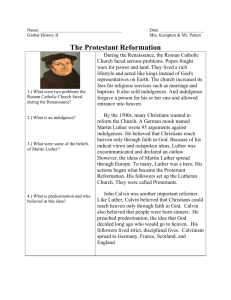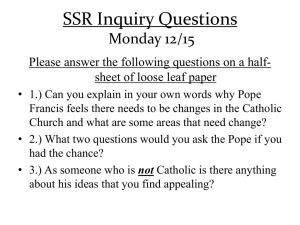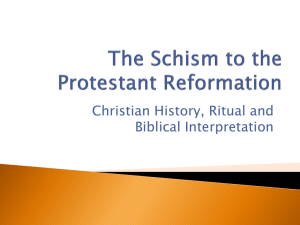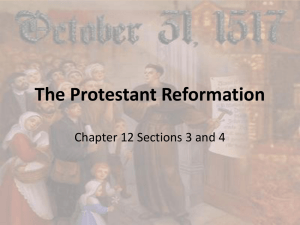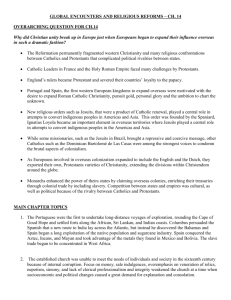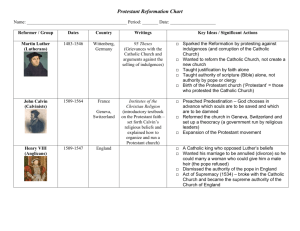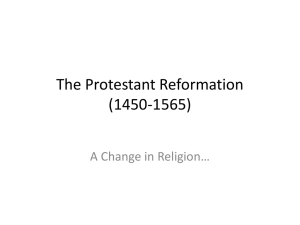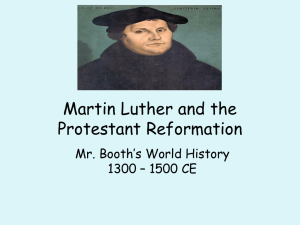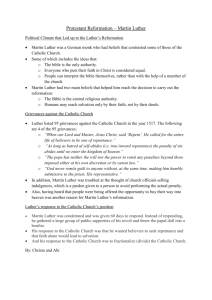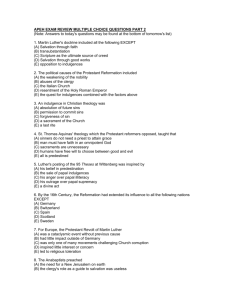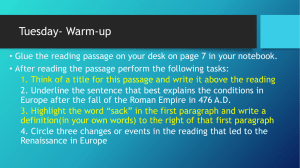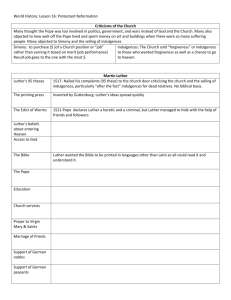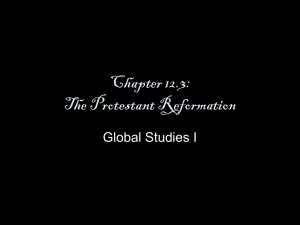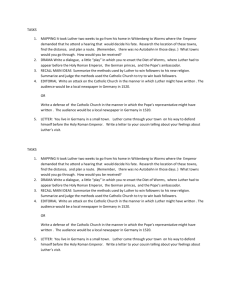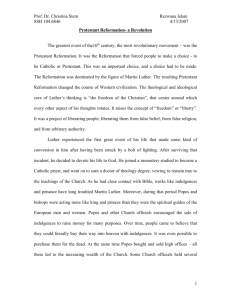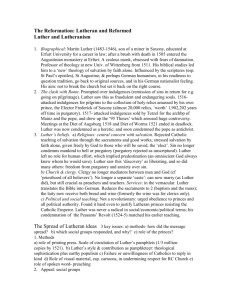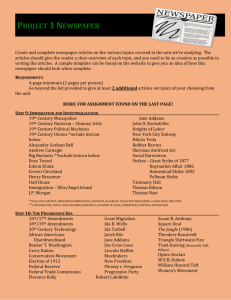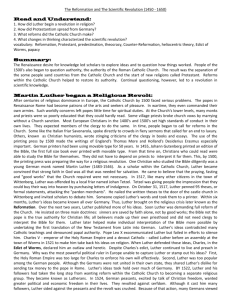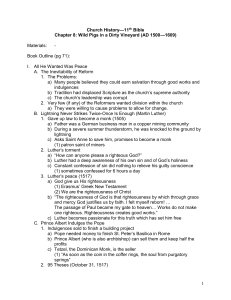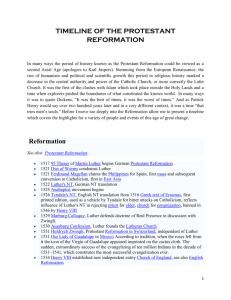The Protestant Reformation
advertisement
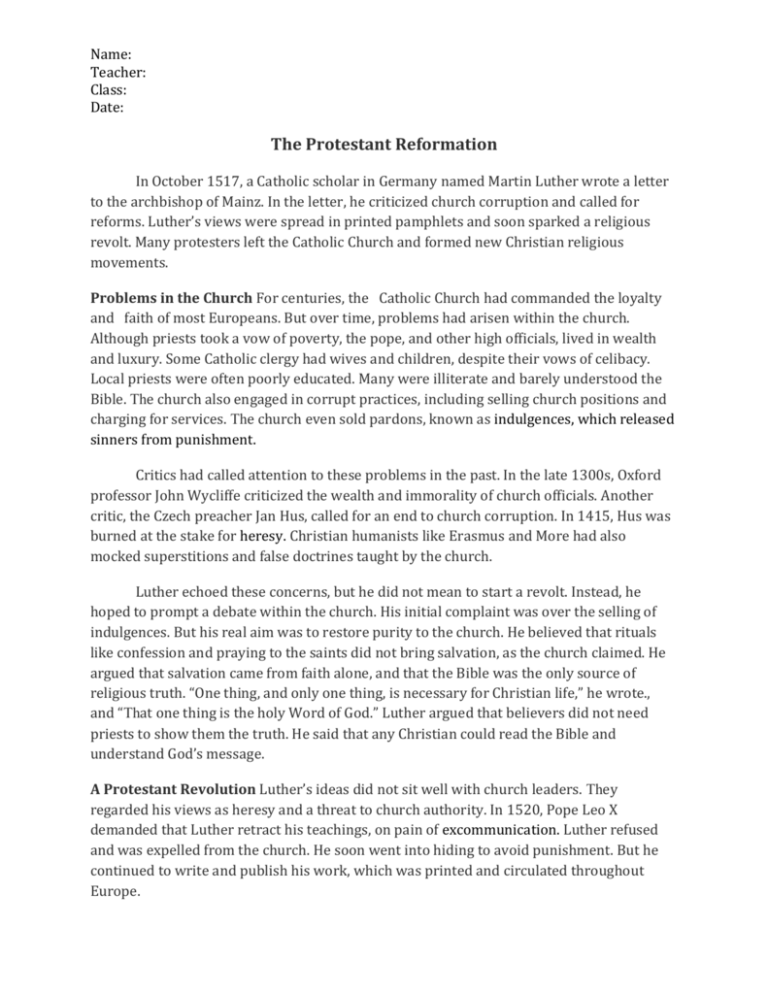
Name: Teacher: Class: Date: The Protestant Reformation In October 1517, a Catholic scholar in Germany named Martin Luther wrote a letter to the archbishop of Mainz. In the letter, he criticized church corruption and called for reforms. Luther’s views were spread in printed pamphlets and soon sparked a religious revolt. Many protesters left the Catholic Church and formed new Christian religious movements. Problems in the Church For centuries, the Catholic Church had commanded the loyalty and faith of most Europeans. But over time, problems had arisen within the church. Although priests took a vow of poverty, the pope, and other high officials, lived in wealth and luxury. Some Catholic clergy had wives and children, despite their vows of celibacy. Local priests were often poorly educated. Many were illiterate and barely understood the Bible. The church also engaged in corrupt practices, including selling church positions and charging for services. The church even sold pardons, known as indulgences, which released sinners from punishment. Critics had called attention to these problems in the past. In the late 1300s, Oxford professor John Wycliffe criticized the wealth and immorality of church officials. Another critic, the Czech preacher Jan Hus, called for an end to church corruption. In 1415, Hus was burned at the stake for heresy. Christian humanists like Erasmus and More had also mocked superstitions and false doctrines taught by the church. Luther echoed these concerns, but he did not mean to start a revolt. Instead, he hoped to prompt a debate within the church. His initial complaint was over the selling of indulgences. But his real aim was to restore purity to the church. He believed that rituals like confession and praying to the saints did not bring salvation, as the church claimed. He argued that salvation came from faith alone, and that the Bible was the only source of religious truth. “One thing, and only one thing, is necessary for Christian life,” he wrote., and “That one thing is the holy Word of God.” Luther argued that believers did not need priests to show them the truth. He said that any Christian could read the Bible and understand God’s message. A Protestant Revolution Luther’s ideas did not sit well with church leaders. They regarded his views as heresy and a threat to church authority. In 1520, Pope Leo X demanded that Luther retract his teachings, on pain of excommunication. Luther refused and was expelled from the church. He soon went into hiding to avoid punishment. But he continued to write and publish his work, which was printed and circulated throughout Europe. Name: Teacher: Class: Date: Luther and his followers formed the Lutheran Church, a new branch of Christianity. Lutheran ministers simplified church services and rituals and preached in German rather than Latin. Many Germans abandoned Catholicism in favor of the new Lutheran faith. At the time, Germany was part of the Holy Roman Empire, a state that also included parts of France, Italy, and central Europe. The German territories enjoyed considerable self-rule within the empire, however. Some of their ruling princes defied the emperor, Charles V, and sided with Luther. They became known as Protestants for their protests against the Catholic Church. Meanwhile, other Protestant groups arose in different parts of Europe. Switzerland was a major focus of reform activity. In Zurich, Huldrych Zwingli (HUL-drick ZVING-lee), a Catholic priest inspired by Luther’s ideas, founded a new religious denomination. His Reformed Church emphasized Bible study and banned all images and music from church services. In Geneva, the reformer John Calvin founded an even stricter denomination. Calvin emphasized the values of thrift, hard work, and the rejection of worldly pleasures. Members who did not uphold these values were excommunicated. Calvin also stressed the notion of predestination. This is the idea that some people are chosen by God for salvation. Calvin’s church gained followers throughout Europe—in France, the Netherlands, Germany, and England. His ideas later had a major impact on religion in British North America. England also underwent its own Reformation. In 1534, King Henry VIII formed the Church of England, also called the Anglican Church. Henry broke with the Catholic Church because it refused to grant him a divorce from his wife, but also because he wanted to claim power over the church—and its wealth—in England. The spread of Protestant religion provoked conflicts across Europe. In Germany, Protestant and Catholic states fought a series of bitter wars that lasted for a century, until the mid-1600s. Religious wars and persecutions also ravaged France, the Netherlands, and other countries. Only Italy, Spain, and Portugal remained outside Protestant influence. Eventually, it became custom that the ruler of each state would choose the religion of his people. This led to the migrations of many believers to more hospitable lands.
